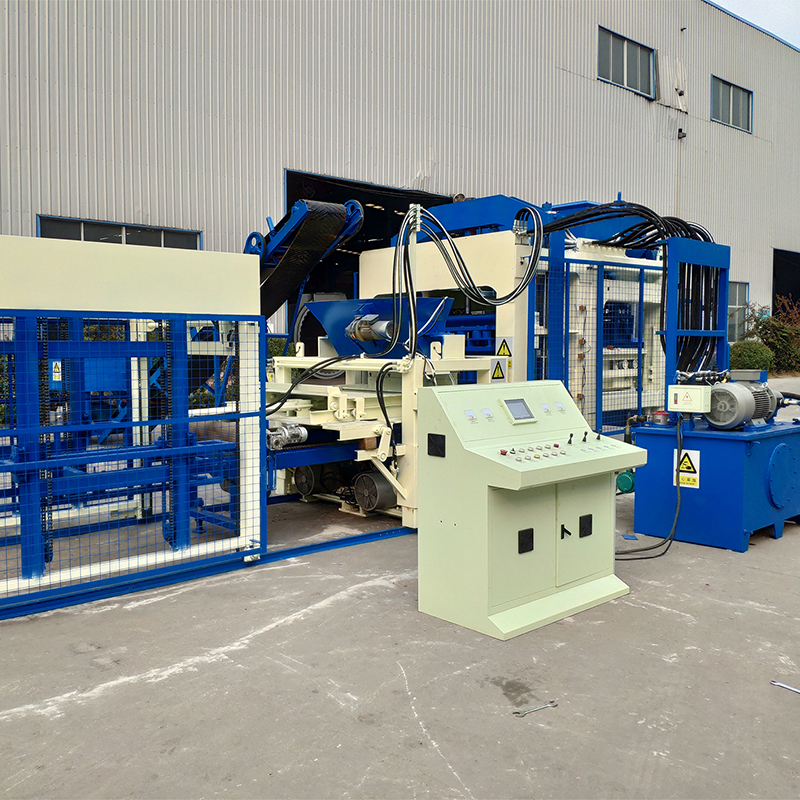
Title: Comparative Analysis of Semi-Automatic and Fully Automatic Clay Brick Production: Striking a Balance Between Efficiency and Control
Introduction
The production of clay bricks, a fundamental building material, has evolved with technological advancements. Two prominent approaches to brick manufacturing have emerged: semi-automatic and fully automatic production methods. This comparative analysis delves into the key differences between these two approaches, weighing the benefits and drawbacks of each to provide insights for stakeholders in the construction industry.
**1. Degree of Automation:
- Semi-Automatic:
- In semi-automatic clay brick production, certain tasks, such as feeding raw materials and extracting finished bricks, are automated.
- The molding and firing processes often involve manual intervention, providing operators with greater control over these critical stages.
- Fully Automatic:
- Fully automatic systems, on the other hand, aim to automate the entire production process, from raw material preparation to brick stacking.
- These systems use advanced robotics and machinery, minimizing the need for human intervention during the manufacturing process.
2. Cost Considerations:
- Semi-Automatic:
- Semi-automatic systems generally require a lower initial investment compared to fully automatic setups.
- Operational costs may be higher due to labor expenses, but the overall affordability attracts smaller-scale brick manufacturers.
- Fully Automatic:
- While fully automatic systems necessitate a higher initial investment, the long-term cost efficiency is notable as they reduce labor costs and often optimize energy consumption.
3. Flexibility in Production:
- Semi-Automatic:
- Semi-automatic production allows for greater flexibility in adapting to variations in brick designs and sizes.
- This flexibility is beneficial in catering to diverse market demands and accommodating changes in architectural trends.
- Fully Automatic:
- Fully automatic systems may have limitations in terms of adaptability to varied brick specifications due to their high level of automation.
- Changes in production parameters may require reprogramming, making them better suited for large-scale, standardized production.
4. Control and Customization:
- Semi-Automatic:
- Operators have more control over the molding and firing processes, allowing for real-time adjustments based on quality considerations.
- Customization of bricks for specific projects is more feasible due to the hands-on approach.
- Fully Automatic:
- While fully automatic systems offer precision and consistency, the level of control over each brick’s characteristics may be limited.
- Customization capabilities might be restricted, making these systems more suitable for mass production of standardized bricks.
5. Labor Requirements:
- Semi-Automatic:
- Semi-automatic production methods involve a significant reliance on manual labor, particularly during crucial phases like molding and firing.
- Skilled operators are essential for optimal performance.
- Fully Automatic:
- Fully automatic systems significantly reduce the need for manual labor, relying on automated processes and robotics.
- Operators focus on overseeing and maintaining the machinery rather than actively participating in each production step.
6. Environmental Impact:
- Semi-Automatic:
- Semi-automatic methods may be perceived as more environmentally friendly due to potentially lower energy consumption and a reduced reliance on automated processes.
- Fully Automatic:
- Despite increased energy efficiency, the complex machinery in fully automatic systems may have a higher initial environmental impact during production and installation.
Conclusion
The choice between semi-automatic and fully automatic clay brick production methods depends on various factors, including the scale of operation, customization requirements, and budget considerations. While semi-automatic methods offer greater flexibility and control, fully automatic systems excel in efficiency and long-term cost savings. Striking a balance between these approaches, based on specific production needs, emerges as a strategic choice for brick manufacturers seeking to meet the demands of a dynamic and evolving construction industry. Ultimately, the comparative analysis underscores the importance of aligning the chosen production method with the unique goals and circumstances of each manufacturing venture.
